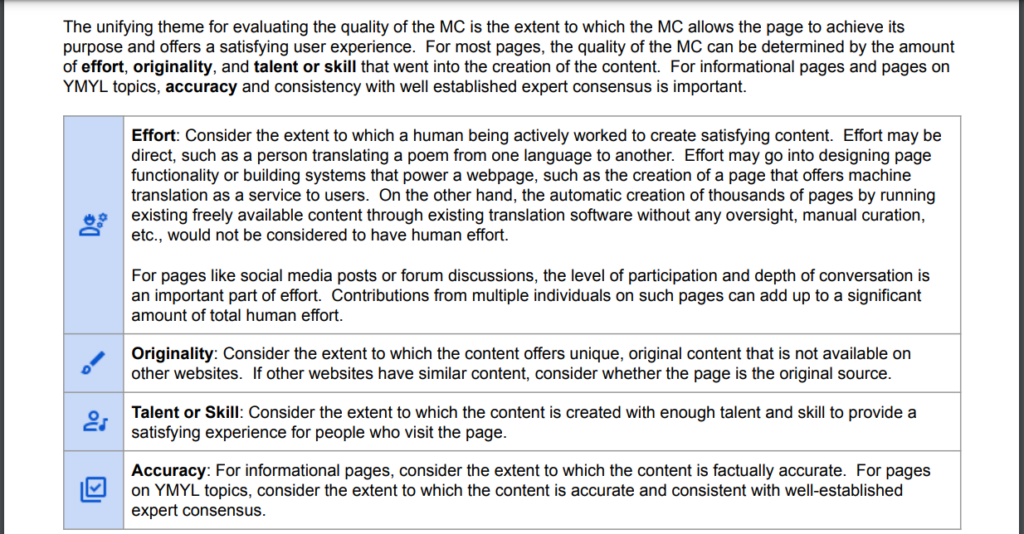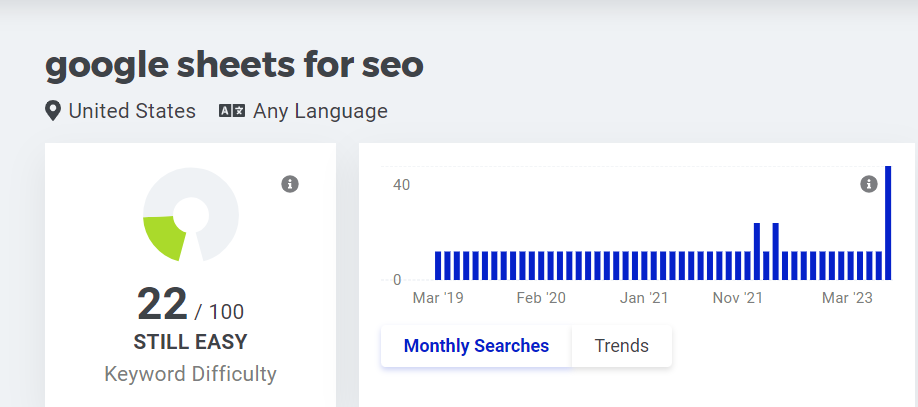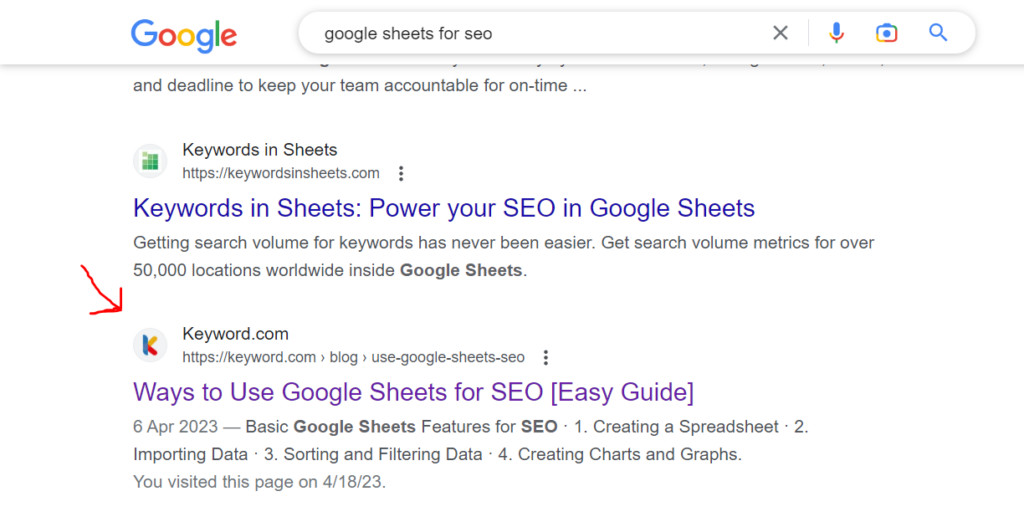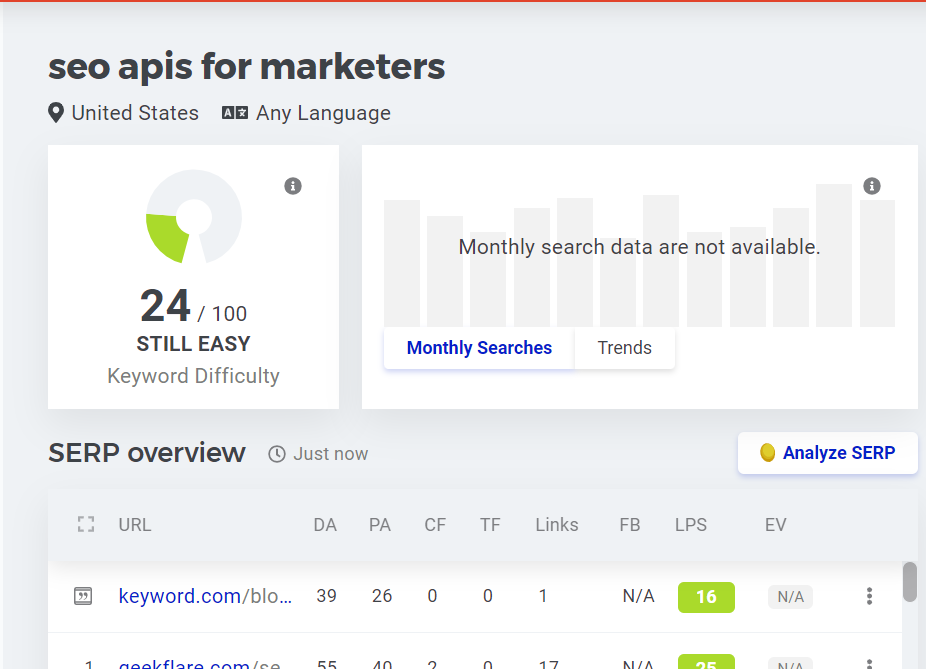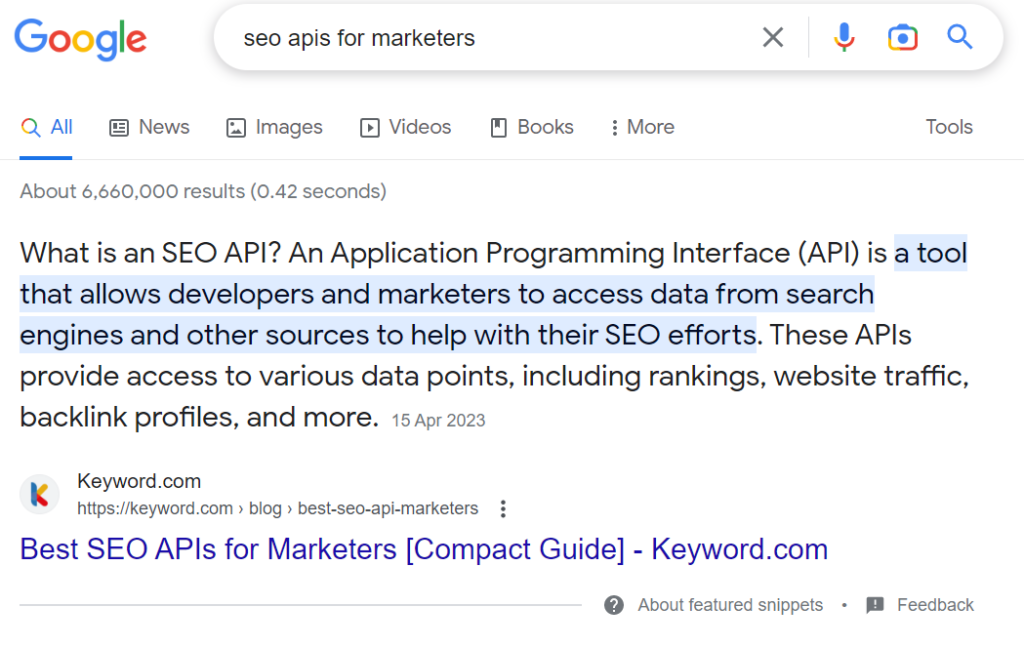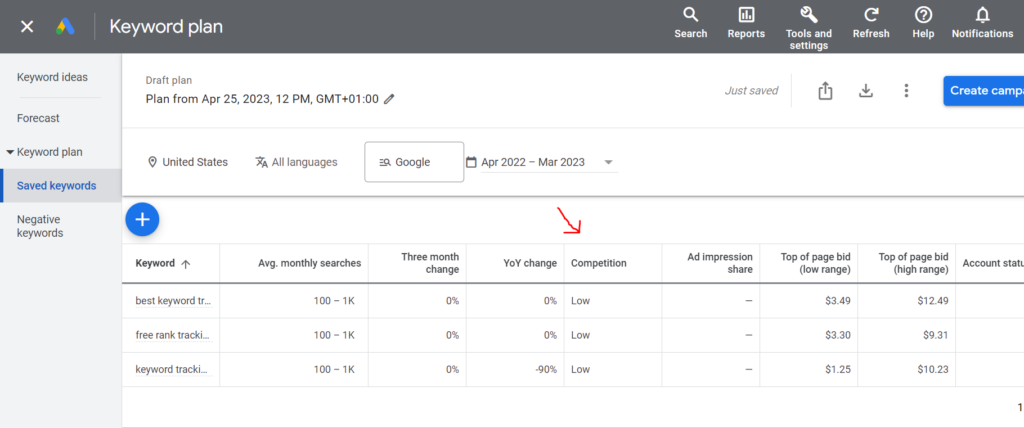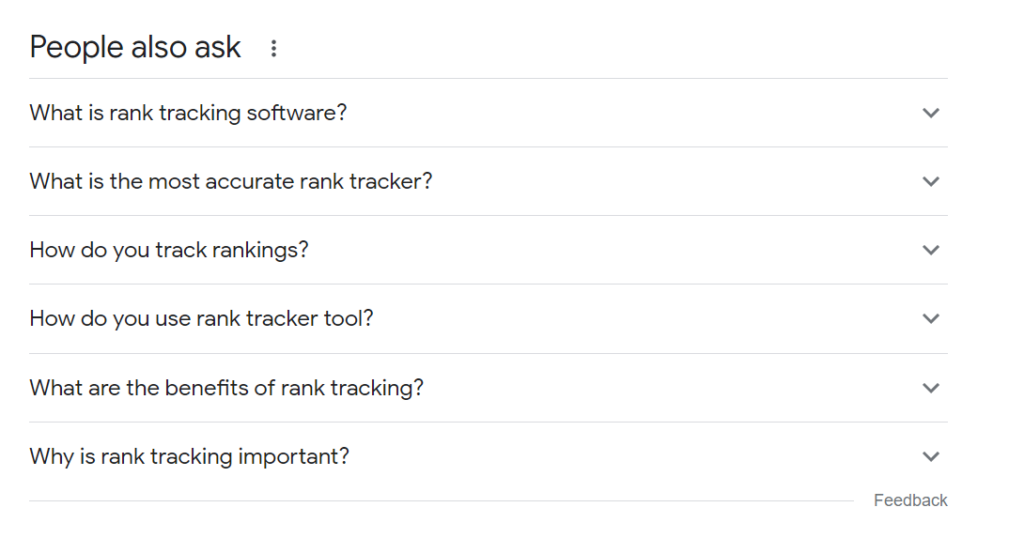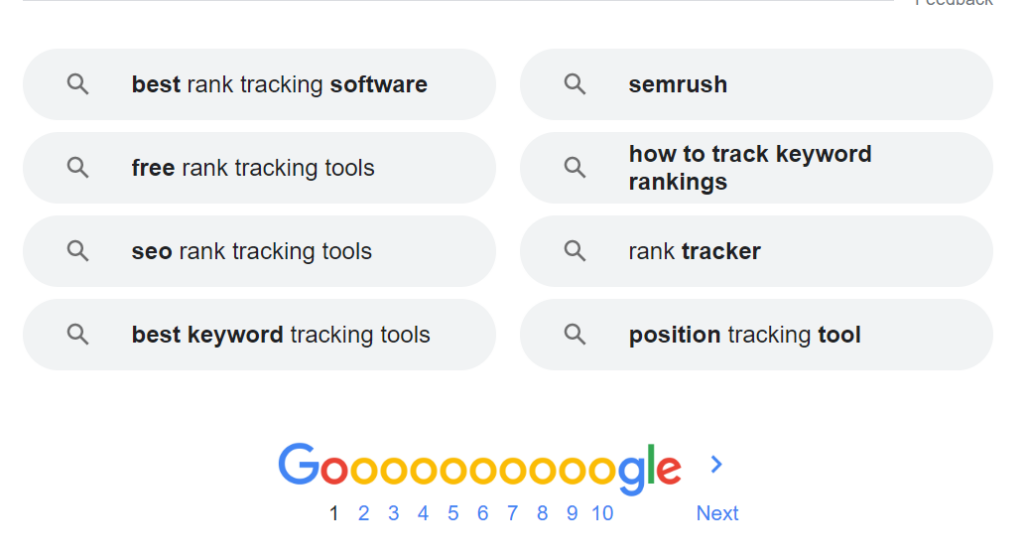When it comes to SEO, not all keywords are created equal. High-competition keywords may seem appealing due to their search volume, but they often require significant time, resources, and domain authority to rank. That’s where low-difficulty keywords come into play.
Targeting these less competitive keywords offers a strategic advantage, allowing you to gain visibility, drive relevant traffic, and increase conversions faster. By focusing on keywords with lower competition, you can build authority and enhance your search engine rankings without battling established competitors head-on. Here’s why low-difficulty keywords should be a priority in your SEO strategy.
Five Reasons to Target Low-Difficulty Keywords
- Low-difficulty keywords usually have low search volumes, making them easier to rank for
- Targeting low-difficulty campaigns makes your SEO and paid marketing efforts cost-effective
- They generate quick SEO ROI
- They have better click-through rates
- They generate decent website traffic
What Are Low-Difficulty Keywords?
Low-difficulty keywords are easy to rank for on search engine result pages. You don’t necessarily need a high domain authority website or to build many links to rank for these keywords.
These keywords have lower search volume than high-competition keywords, but they are specific and targeted to a particular search intent which can result in higher click-through rates.
It is expedient to know that most low-difficulty keywords are long-tail, making them less competitive and easier to rank (we will explain extensively about the advantages of these keywords in the later part of this article).
Factors That Influence a Keyword’s Difficulty Level
1. Search Volume
The number of users searching for a keyword automatically affects its difficulty.
Logically, everybody wants a keyword with high search volume because ranking for these keywords equals generating more traffic to their sites. That’s why keywords with hundreds of thousands of search volumes have relatively high KD.
Learn more: Keyword volume vs difficulty vs search intent
2. Backlink Profiles of the Ranking Websites
One of Google’s checklists for ranking websites on SERPs is the authenticity and reliability of the site, otherwise known as link profile.
Reputable websites won’t link to dubious or low-quality websites. For instance, an authoritative website will only provide links to other sites with similar value quality. A strong link profile is the outcome of links to these websites.
Link profiles are one of Google’s methods for assessing a website’s or webpage’s quality.
We’re sure you know building a strong link profile is difficult; this is a crucial factor that influences keyword difficulty.
It is more difficult to rank for a keyword if the high-ranking sites on SERPs have a robust link profile.
Learn more: How do backlinks affect SEO ranking?
3. Competition
Aside from a keyword’s search volume, the number of sites targeting it also affects its difficulty.
For example, the result page for the keyword SEO shows that it is more challenging to rank for it compared to the keyword rank tracking tools.
Why?
The number of sites targeting the first keyword is higher than the other one.
4. Relevance of Content Targeting the Term
Google aims to provide its users with relevant, unique, and accurate information. That’s why content quality is a major ranking factor.
The quality of content available for a particular keyword affects its difficulty.
It is much easier to rank for a keyword if none of the sites targeting it provides high-graded content. So if you are a new brand with a small or no link profile, your escape route to go up the result pages is creating relevant, keyword-optimized, user intent-focused, and insightful content.
5. Quality of a Model Page
Firstly, a high-quality model page optimized for a particular keyword can increase the keyword difficulty because it signals to search engines that the competition for that keyword is high. A well-optimized page will likely have a strong backlink profile, high domain authority, and high-quality content that other pages will find difficult to compete with.
On the other hand, a low-quality model page can decrease the keyword difficulty. A low-quality page may need to be optimized for a particular keyword and require a strong backlink profile or high domain authority. This means that other pages will find it easier to compete with such a page, which could result in a lower keyword difficulty score.
Now that you know the factors influencing keyword difficulties, let’s examine some benefits of targeting low-difficulty keywords.
Advantages of Targeting Low-Difficulty Keywords
A. Easy to Rank
Low-difficulty keywords are escalators that effortlessly take you up the search engine result pages. You may need to build a small number or no link to get page ranking.
For example, we created a blog post around a low-difficulty keyword – google sheets for SEO.
This keyword has a KD of 22 but a search volume of 22.
NB: Here is a significant mistake most brands make; they ignore low-difficulty keywords because of their low search volume forgetting that they have a specific search intent and are highly converting.
We created this article and ranked it on the first page of SERP rankings within a few days.
Again, we created another article around a low-difficulty keyword – SEO APIs for marketers.
This keyword has a KD of 24. That’s cool!
Most importantly, this keyword is relevant to one of our tool’s features.
Also, when you target low-difficulty keywords, you can easily find long-tail variations that are easier to rank for and relevant to your audience.
Milo Cruz, CMO at Freelance Writing Jobs, says, “At Freelance Writing Jobs, we targeted the low-difficulty keyword remote writing jobs. We optimized our content around this keyword and found several long-tail variations suitable to our audience, like remote content writing jobs and remote copywriting jobs. By creating targeted content around these long-tail variations, we drove more qualified traffic to our job portal and helped job seekers find and apply for remote writing jobs through our platform.”
B. Cost-Effectiveness
Low-difficulty keywords are less competitive. You don’t have to spend more on paid ads.
“By targeting low-difficulty keywords, you’ll be able to start your SEM campaign more quickly. If you want to get started with paid search advertising immediately, look at targeting easier terms. You won’t need much experience or budget to get going with these terms; they’ll give you quick wins so that you can begin seeing results right away and build momentum for future campaigns,” Will Yang, CEO at Instrumentl.
C. Quick Results
You don’t want to wait the donkey years to see results as a new business. Therefore, you need a strategy that can quickly fly you over the hurdles of your competitors, seek out a small percentage of the overall market share, and produce a better ROI.
That’s where low-difficulty keywords come in!
They are easy to rank for and require less effort and budget to produce results.
D. Better Click-Through Rates
Most low-difficulty keywords are long-tail keywords. And you know these keywords are specific and targeted to a particular audience. Most importantly, they satisfy a clear search intent.
Why won’t your page have a better click-through rate by optimizing these keywords?
Baruch Labunski, says, “Many may think fewer viewers mean fewer sales or website traffic, but that isn’t always true. Those who pick the right low-difficulty words will target people looking for a specific thing and are ready to buy. This can help those who are targeting a certain geographic area for a specific service or have a niche item they’re selling.”
E. Increased Website Traffic
When your pages’ click-through rates increase, the result is an increase in your website’s traffic. However, your conversion level will now depend on the quality of your content and how tailored your CTAs are.
Even though low-difficulty keywords are low volume, optimizing them perfectly will increase your site’s organic traffic and convert your targeted audience.
And before we jump into the full process in detail, you can also check out our detailed guide on how to choose the right keywords for SEO.
How to Find Low-Difficulty Keywords
1) Use Google
Every SEO expert knows Google is the first go-to center for keyword research, especially low-difficulty long-tail keywords. Google is an archive of relevant keywords, but you must be strategic in fetching them out to access them. Here are some places to access these keywords:
- Google Suggest
Input your primary long-tail keyword into Google’s search bar, and it automatically gives you a list of related keywords, mostly low-difficulty.
For example, “keyword rank tracking tool” is a low-difficulty long-tail keyword. If we input this keyword into Google’s search bar, we have a list of other keywords like free rank tracking tools, SEO rank tracking tools, and more.
Let’s analyze the difficulties of some of these keywords on Google Keyword Planner.
There you have it – a list of low-difficulty keywords.
- People Also Ask for Segment
You can get a list of low-difficulty keywords from the People Also Ask segment. For example, we got a list of low-difficulty keywords from the People Also Ask segment of the result page for the keyword rank tracking tools.
- Related Searches
You can access a list of low-difficulty keywords by analyzing the Related Searches segment of search engine result pages.
For example, we discovered a list of related low-difficulty keywords for rank-tracking tools.
2) Keyword Research Tools
There are a lot of keyword research tools out there to find low-difficulty keywords. These platforms have their standard metrics for calculating the difficulty of a keyword. You can try a few tools: Google Keyword Planner, Keyword Tool, Ahrefs, SEMrush, Moz, Longtailpro, and more.
…and then, these tools have their keyword difficulty scoring system.
There are several SEO tools out there with different keyword-difficulty scoring systems. Undeniably, it can be frustrating trying to choose the best tool with an accurate scoring system.
To help things out, we got insights from SEO experts on three platforms – LinkedIn, Qwoted, and Helpab2bwriter.
We requested SEO experts’ opinions on the keyword research tool with the best keyword-difficulty scoring system.
We started by asking some SEO professionals on LinkedIn, and here was one of the responses we received:
“Apart from when I am doing high-level research into niches, I’ve always ignored all of them, to be honest! Many of them are third-party compound metrics, and they won’t tell you how the calculation is done, and even the main players give vastly different results.” Mark Williams-Cook, Founder of AlsoAsked.
We moved further by requesting opinions from some SEO experts on Qwoted. Here are some of the responses we received:
“There isn’t a single keyword tool out there with 100% reliable data on keyword difficulty. It’s best to combine one or two tools with your analysis of SERPs for that keyword, to assess how difficult it would be to target,” Kate Smoothy, Owner at Webhive Digital.
“Throughout my career, I have seen that SEMRush has the best keyword difficulty data,” Joe Karasin, Owner Karasin PPC.
“Ahrefs seems to have the most accurate data; most professional SEOs in my friend’s group agree with this,” Angelo Sorbello, Founder of Linkdelta.com.
And lastly, we got a lot of responses from SEO experts on helpab2bwriter. Here are a few:
“In my opinion, SEMrush has one of the more accurate scoring systems regarding keyword difficulty,” Steph Andrusjak.
“It is important to remember that keyword research tools may have different scoring systems for determining keyword difficulty. While some tools may use a numerical score or a traffic light system, others may use a percentage or a letter grade. Therefore, it is important to look at multiple platforms to determine keyword difficulty and make an informed decision,” Rachel Macfarlane, Content Marketing Strategist at Redfox Visual.
“I usually just defer to Ahrefs whenever I want to have a quick indicator of competitiveness for each keyword. Ahrefs’ keyword difficulty metric is only based on links, so it’s simple enough,” Mervin Lance Calabia.
Which of the SEO tools has the best keyword-difficulty scoring system?
Here is our conclusion…
While different tools may have their scoring systems, choosing the one that aligns with your specific goals and priorities is essential.
Geoff Cudd, Founder of Don’t Do It Yourself says, “The best approach is to familiarize yourself with several different scoring systems. There’s no single ‘correct’ methodology here. Each tool has its approach to measuring keyword difficulty, and as such, you’ll need to determine which one works best for your particular use case.”
Also, we recommend following the strategy Gauri Manglik tags as the combination of human judgment and machine learning algorithms.
“I believe this is the best approach because it allows me to take advantage of all the advantages of each type of scoring system. For example, human judgment can provide insight into what’s working and what isn’t regarding audience engagement and retention—but it doesn’t scale well with large datasets or new content formats. Machine learning algorithms can scale to handle those things, but they won’t be able to provide the same kind of nuanced insights that humans can give,” Gauri Manglik, CEO and Cofounder of Instrumentl.
Related: Best keyword tracking tools you can use for your business
3) Analyzing Competitors’ Keywords
Ignoring your competitors in your keyword research can result in a big blow!
You can save time researching new keywords by analyzing ready-made keywords from your competitors.
Most of your competitors know the power of low-difficulty keywords; you can get a bank of relevant keywords from them. For effectiveness, SEO competitive analysis tools give you access to keywords from your competitors; you can try them out!
Note: You need to cross-check the keyword difficulties of the keywords generated from your competitors’ sites and analyze the ones relevant to you.
4) Using Long-Tail Keywords
Most long-tail keywords are low-difficulty keywords. They are specific, easy to rank for, and targeted to the searchers’ intent. Also, a report by Embryo shows that long-tail keywords are often more economical to advertise on as they have less competition.
Learn more: How to find long-tail keywords
Discover Low Volume Keywords with Keyword.com
Keyword.com makes it easy to identify low-volume keywords you can rank for easily. All you need to do is input the keywords, and we’ll provide a detailed breakdown with relevant data like search intent, volume, and traffic potential. That way, you’ll know which keywords are worth targeting in your SEO strategy and be able to track their performance in the SERPs efficiently.

